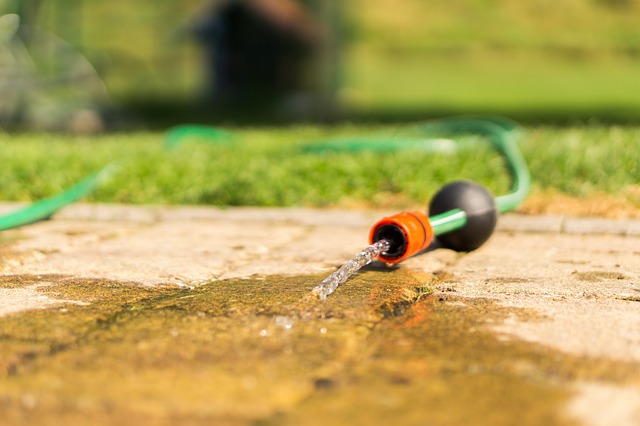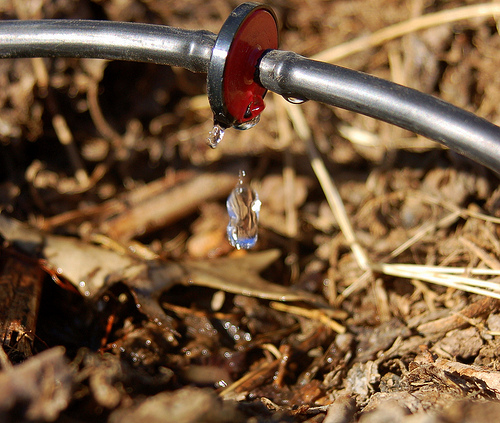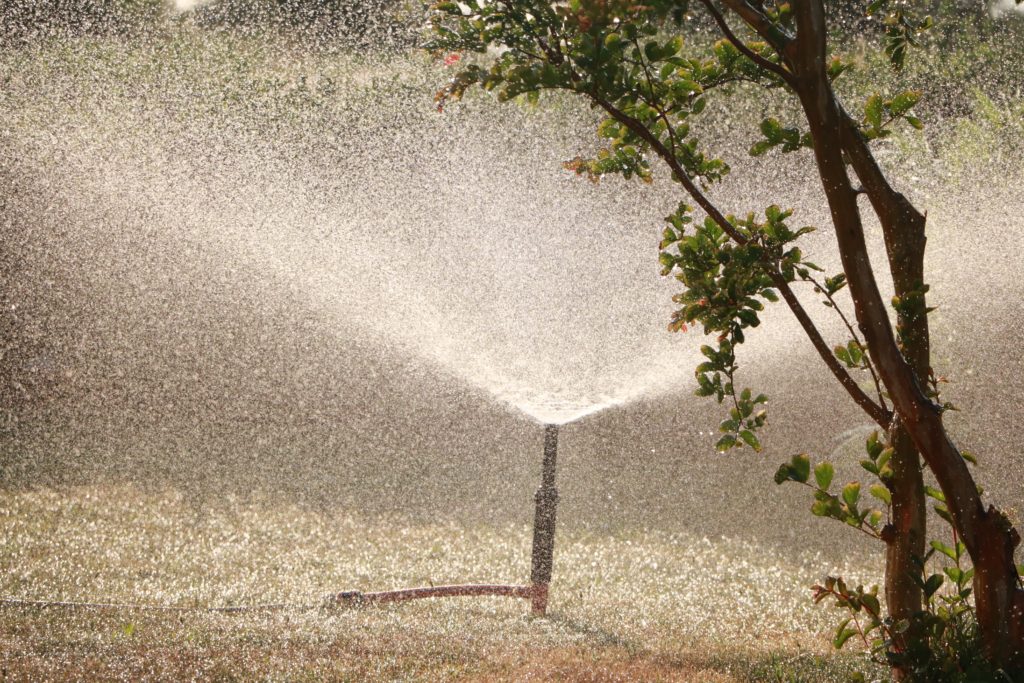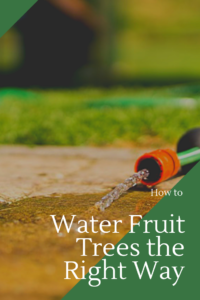How to Water Fruit Trees in Hot Climates The Right Way

Learning the art of watering fruit trees can be one of the most challenging things for beginning gardeners. Gardening in places with frequent rainfall can make life a bit easier, but If you’re living in a hot climate that sees very little rainfall, that compounds the issue. Through my years of gardening in a desert climate, I’ve gained a solid understanding of how to water fruit trees. I hope that sharing this knowledge will help bring clarity by answering questions regarding, “how much and how often should I water.”
What is the best way to water a fruit tree? The best way to water a fruit tree is on a slow drip system. This can be accomplished through utilizing an irrigation system set-up to a timer, with things like drip emitters, soakers, or bubblers. Another way to achieve this type of watering is to water with a hose on a slow drip, while move the hose around the base of the tree at designated time intervals. Watering in a way that’s going to moisten the soil to at least a depth of 3 feet around the root zone is optimal.
Preparing the Area for Watering
After planting your fruit tree, the area is going to need some preparation for an effective watering method. There are several different methods that can be useful ways to get water to your tree. Here are a few to consider:
Basin
I create basins for all my newly planted fruit trees. When the tree has been planted a basin can be formed by piling excess soil about a foot high forming a ring around the tree. The ring should be out at least as wide as the canopy of the tree, for young small trees, I do 2-3 feet outside the canopy. This basin can be widened over time as the tree grows larger. A basin allows for the root zone to be flooded several times while allowing the water to seep into the root zone. It helps keep the water contained into the area that you want it, instead of running all over the place.
Hose
I know this sounds crazy, but for several years I’ve watered all my plants and fruit trees with a hose. I have several raised garden beds and around 35 fruit trees or fruiting plants. Needless to say it’s time consuming. Watering with a hose has its benefits. Since I’m not relying on an automatic system to do the job, I’m out with the plants more and catch potential problems immediately. I can observe any potential pest problems as they start or when a plant seems to show signs of stress. You may find this post helpful: 7 Reasons Why Your Fruit Trees are Losing Leaves. When things are automated, you begin to make the assumption that everything is working fine, and often identify the problems too late.
Flood Irrigation
In the Phoenix, Arizona area where I reside, some homes are fortunate to be set-up on flood irrigation. For a low cost, every couple weeks, the yard is completely flooded with canal water. This allows for deep watering for your fruit trees developing healthy root structures. Another plus is that canal water contains less salts and can alleviate some of the problems with salt build-up. This is a great option, but unfortunately isn’t readily available for most homeowners.
Drip System

This is the way to go when it comes to setting up an irrigation system. There are several options from bubblers to drip emitters that provide that slow source of water to seep deep into the soil. It’s important to make sure that you’re still frequently checking your system for any potential leaks. A slow drip encourages the roots to grow deep versus stay on the surface.
Shallow watering leads to surface roots which are the roots that tend to disrupt walls, concrete, and homes. Trees are more likely to be uprooted from strong winds with shallow roots. Use enough drip lines to ensure the whole root zone is able to be soaked and continuously move the drip line further out as the tree grows. If you leave the drip near the trunk for the duration of the tree, the roots that have grown out won’t be getting the necessary water.
Collecting Rain Water/Grey Water
Greywater systems are designed for conserving water. Utilization of water from the shower, washing machine, or sinks can be funneled through a system to use in your landscape. This can help with reducing the cost of water and excess use. Likewise, systems can be set-up to collect and store rain water. Rain water is the best for plants, since it doesn’t have the added salts and contaminates like tap water.
Sprinkler Systems

Sprinklers are great for watering lawns, but aren’t recommended for fruit trees. When you use sprinklers, a lot of the water evaporates in the air, and it’s harder to promote deep watering. You’re more likely to see problems, which have previously been discussed, regarding shallow watering or salt build-up.
How Long Should I Water
There are a couple keys to determining how long you should water. One is the size of the tree. It’s a good rule of thumb to provide at least as much water as the size of the tree. For example, a tree in a 15 gallon container will need 15 gallons of water. If using a drip system, emitters tend to range from 0.5-2 gallons per hour. So, a tree with two emitters that have a flow of 2GPH, would mean that the tree is getting 4 gallons of water every hour. It would take 3 hours to accomplish the needs of thoroughly watering a 15 gallon size tree. Using this formula can help you to set your irrigation system up to meet the needs of your fruit trees.
If you’re using a hose, see how long it takes to fill a gallon and do the math from there. If you prefer a more streamlined method, The Zilker Water Hose Faucet Timer is an amazing smart product that can be synched with your phone. It allows you to connect to your hose while monitoring the gallons, inches, leaks, and more with your smart device. Click the photo below for purchase options:

Another factor to ponder, is how deep the water is seeping into the soil. The root zone should be moist to a depth of about 3 feet. Using a probe can help you determine if the root zone is still moist by pushing the probe into the soil as far as it will go. If the soil is wet, the probe will easily move through the soil. Sterilize the probe with rubbing alcohol before using it on another tree to prevent potentially spreading disease.
When Should I Water
The main factor that I pay attention to when deciding when to water is the outdoor temps. In the Phoenix, Arizona desert where I reside, temps can significantly fluctuate from day time highs to night time lows. A high of 75 degrees Fahrenheit may seem pleasantly warm, but temps may plummet into the 30’s Fahrenheit that night.
So, if the lows are still remaining quite cool, compared to the highs that tells me to water a bit less. As temps start to go into the 80’s Fahrenheit, I start increasing the watering frequency. Typically I water very little in the winter months, maybe not even at all if we get a steady amount of rain. If you are watering deeply, then you won’t need to water as frequent.
CITRUS TREES
| Celsius | Fahrenheit | Frequency |
| 21-26 | 70’s | Every 14 days |
| 26-32 | 80’s | Every 10-14 days |
| 32-37 | 90’s | Every 7-10 days |
| 37-40 | 100’s | Every 5-7 days |
| Over 40 | EXTREME Over 105’s | Every 5 days |
STONE FRUITS/TEMPERATE FRUIT TREES
| Celsius | Fahrenheit | Frequency |
| 21-26 | 70’s | Every 7-10 days |
| 26-32 | 80’s | Every 7 days |
| 32-37 | 90’s | Every 5-7 days |
| 37-40 | 100’s | Every 5 days |
| Over 40 | EXTREME over 105’s | Every 3-5 days |
TROPICAL FRUIT TREES
| Celsius | Fahrenheit | Frequency |
| 21-26 | 70’s | Every 5-7 days |
| 26-32 | 80’s | Every 3-5 days |
| 32-37 | 90’s | Every 3 days |
| 37-40 | 100’s | Every 2-3 days |
| Over 40 | EXTREME over 105’s | Every 1-3 days |
*Keep in mind that these are approximations I utilize for watering in a hot, dry climate. See below for additional factors to consider.
Things to Consider
Having a general idea of when to water or how long to water definitely helps, but there are so many other factors at play. I know that beginning gardeners would love an exact guide that states water your Orange tree for 1 hour every Thursday, then prepare to harvest oranges, but every yard is different. Reading my post: Importance of Microclimates for Backyard Gardening, may help you to gain a better understanding of the unique climate conditions from backyard to backyard. Here are some additional things to take into consideration when watering:
Size
Smaller plants and trees are going to need more frequent watering then an established large tree. Newly planted trees will need frequent watering the first week or two after planting.

Wind
Wind can cause trees to dry out rapidly, especially the hot, dry winds we get in the desert. Think of a blow dryer on your trees for several hours. It’s always a good idea to water immediately following a major wind storm.
Shade
Trees that are in full sun all day are naturally going to need more frequent watering then trees that are in some shade. Have an idea of how much shade your fruit tree is getting relative to the amount of sun exposure. Keep that in mind when considering when to water.
Container Grown
Trees that are in containers are going to dry out faster and will need to be watered more frequent. The entire root system is above ground and exposed to the hot air. Different types of containers will influence how fast the tree dries out, but it’s still going to be more often than trees in the ground. Here is my Complete Guide to Growing Fruit Trees in Containers.
Soil Type
Know what type of soil you’re working with. If you have heavy clay soil, it’s going to retain more moisture then a sandy soil. With that being said, deeply watering a clay soil, is going to need less frequent watering than a fast draining soil.
Variety of Tree
Having a basic understanding of the type of fruit tree you’re growing will help you to understand the watering needs. Tropical fruit trees are native to environments that are getting heavy amounts of rainfall, so these trees will need more frequent irrigation in hot, dry climates than other types of fruit trees. Citrus trees like a good soak, then being allowed to somewhat dry out before watering again. Some fruit trees like to be consistently moist.
Rootstocks
The rootstock that a tree is grafted too can impact its watering needs. I have a Plum tree that is grafted onto a citation rootstock that likes to stay constantly moist, so I water that tree in the summer more like I would a tropical tree.
Final Thoughts
Determining the watering needs of fruit trees in an environment that lacks rainfall, can be a challenge for even the experienced gardener. When you start to have a basic understanding and some guidelines it takes a lot of the guessing and worrying out of the equation. Identifying some of the factors that go into properly watering your tree, along with some basic knowledge will go a long way.
Please comment below on anything that you’ve found helpful from this post or your experience watering fruit trees in a hot climate.
photo credit: JobyOne Drip irrigation via photopin (license)
